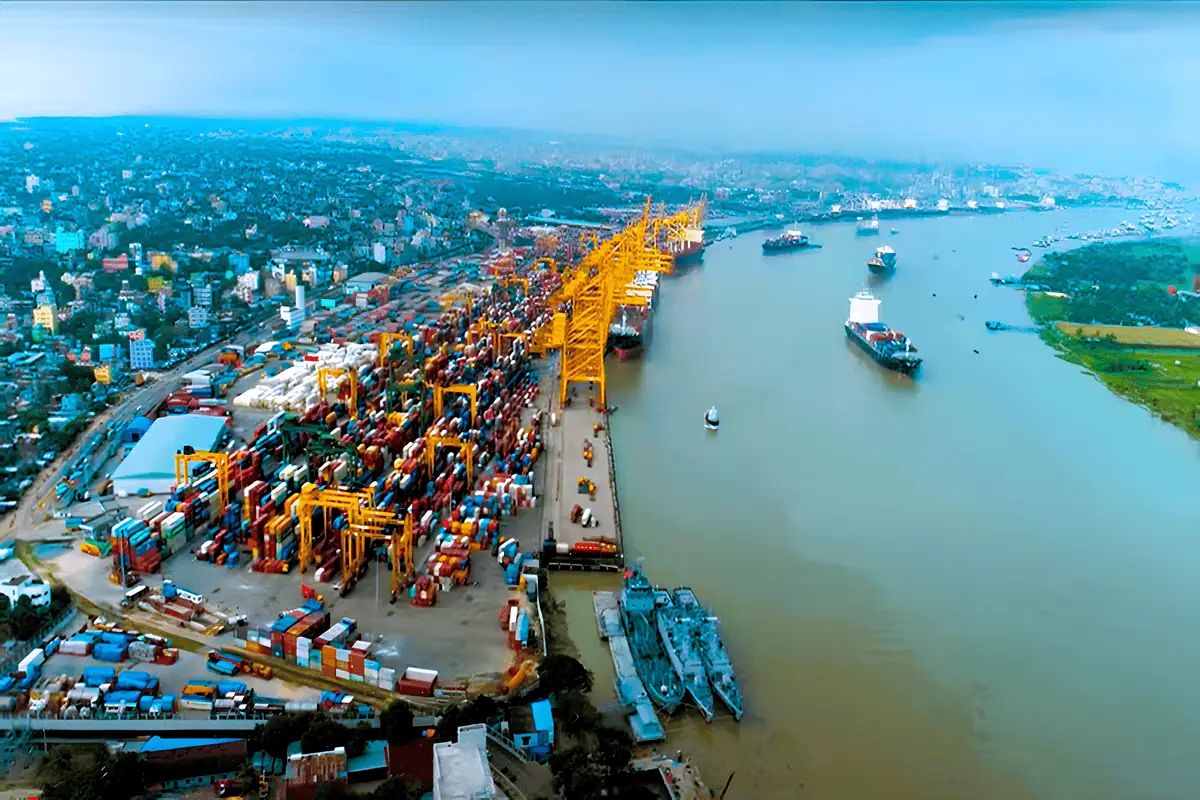Chittagong Port Authority has announced a series of measures to cut down the waiting time for ships at the port’s outer anchorage. One of the key steps taken in this regard is increasing the average number of ships allowed to berth in jetties at main channel each day – from 10 to 13.
This adjustment is expected to significantly ease the backlog of vessels waiting to unload cargo, a longstanding issue that has affected trade flow and increase in operational costs for shipping companies.
According to the Chittagong Port Authority, the New Mooring Container Terminal NCT’s handling capacity has significantly increased since the Dry Dock Authority lead by Bangladesh Navy took over its operations.
This move has enabled the port to utilise the terminal more efficiently, paving the way for the decision to increase the average daily berth from 10 ships to 13.
“These measures are part of a broader initiative to enhance port performance and meet the growing demands of international trade,” Rear Admiral SM Moniruzzaman told TIMES of Bangladesh.
“The efficient cargo movement is critical to maintaining the competitiveness of Chittagong Port as the country’s key maritime gateway,” he said.
As a result of the recent increase in ship berthing capacity at the port, there has been a significant reduction in the number of vessels waiting at the port’s outer berths.
This improvement in operational efficiency is evident in the latest figures: as of Tuesday, only 53 ships were anchored at the outer berths, including six container ships. In contrast, just twenty days ago on 1 August, the number of ships waiting at the outer berths was substantially higher, totaling at 88 vessels, of which 20 were container ships.
Meanwhile, the increase in ship berth at the port has led to a sharp rise in the number of containers stored in the port yard.
Currently, there are 48,751 TEU (Twenty-Foot Equivalent Unit) containers in the yard, bringing it close to its maximum capacity of 53,518 TEU. This marks a significant increase compared to August 1, when the container volume stood at 39,678 TEU. The surge in container volume reflects the port’s heightened activity but also raises concerns about yard congestion as it nears full capacity.
Ruhul Amin Shikder, secretary general of Bangladesh Inland container depot ICD said, there are some backlogs in port operational activity as all components of the port users are not ready to co-opt with the initiatives.
ICDs received around 80 thousand TEUS containers from the port but shipped only 25 thousand TEUS, he added.
But port Chairman Rear Admiral Moniruzzan said, Although, the port’s official container capacity is 53,000, the actual capacity is around 60,000 TEUs because of some recent measures.
Chittagong Port handles over 90 per cent of Bangladesh’s international trade, the recent changes are expected to reduce turnaround times for vessels, lower demurrage costs, and improve overall supply chain efficiency.
Among other initiatives, the port authority has also begun diverting more imported containers to private Inland Container Depots (ICDs). This move is intended to free up space within the main port area, streamline operations, and improve cargo handling efficiency.


